“The World of Tomorrow” was the theme of the 1939-1940 New York World’s Fair. It was meant to show fairgoers what the future would look like. This event depicted how America, for example, would be transformed by electrification and by a huge network of transcontinental highways that came to be known as the Interstate Highway System. It was an event that had an attendance of 44.9 million visitors and with national and international participation by governments and businesses it also reflected a range of contemporary attitudes regarding race and gender and political ideologies.
Since the emergence of mass produced, non-government issued postcards at the start of the twentieth century these often overlapping race, gender and political ideologies have found expression in comic postcards focused on specific, sometimes named, human or animal figures. They have been used for advertising purposes, to promote political candidates and parties, and to target opposing social causes, such as women’s suffrage. Such cards also have been used for propaganda purposes. However, this World’s Fair was largely apolitical in nature, except for exhibits and signage at the pavilions of some European countries showing how they had been attacked by Germany. Some comic propaganda cards did appear in the United States in 1942 after the December 7, 1941, Japanese forces attack on Pearl Harbor.
At this World’s Fair the Borden Company gave away a series of five whimsical postcards by cartoonist Walter Early. One depicts Elsie the Cow being milked in a merry-go-round, which was indeed the “rotolactor,” a largely automated rotating milking machine for fifty cows. This card also complemented magazine advertising by the Borden Company promoting Elsie as its spokes-bovine and a symbol of its product quality.
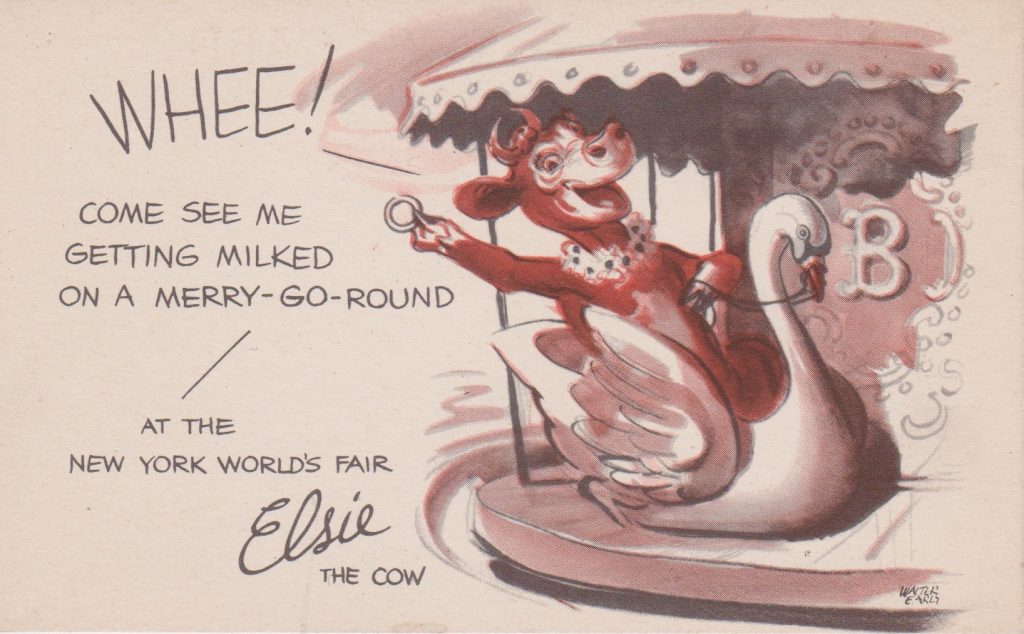
The Standard Brands Company, a food products manufacturer, used a comic image of “Mr. Chase and Mr. Sanborn” (a play on words for a coffee brand) to advertise the “Marionettes in Springtime” being presented at its fair building.
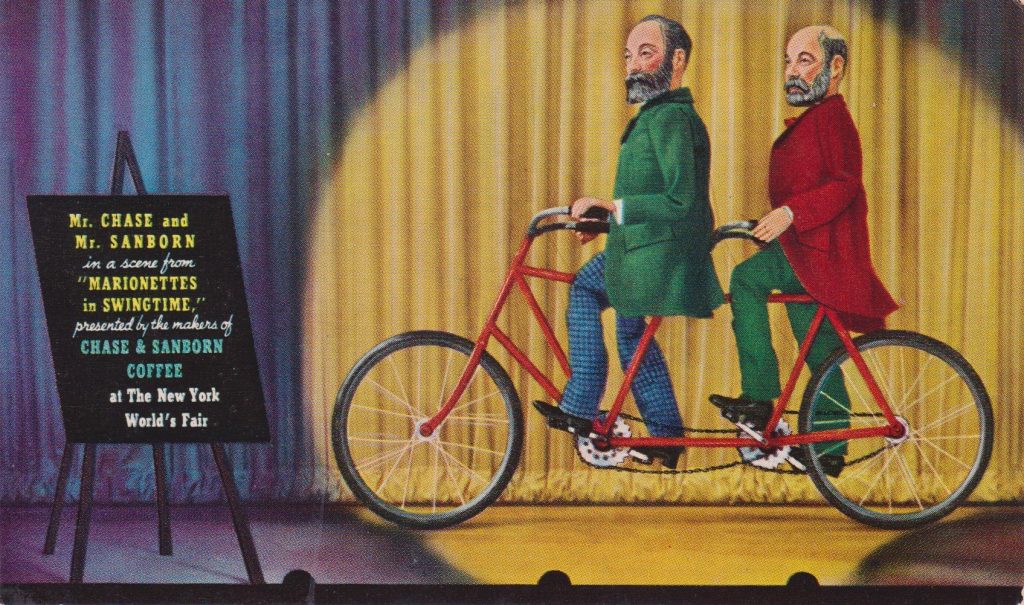
Tichnor Bros, Inc., of Boston, Massachusetts, was the producer of a noteworthy series of six risqué adult-oriented postcards. The artist for these cards of mostly middle-class whites from a European origin may have been Walt Munson, a well-known sports cartoonist and illustrator. These cards were likely sold as a set. (They turn up very infrequently at postcard shows and on postcard sales websites.) The only used one in this available series was mailed from New York on August 16, 1940.
It is unlikely that the New York World’s Fair Corporation, the fair’s organizing body, licensed this set. The only commonality among the six are the edge-printed words, “World’s Fair Comics,” and the divided-back center line giving Tichnor publication credit.
The racially insulting African American janitor card in this series depicts an African American fair employee as physically and intellectually inferior. It is especially scarce and commands the highest price of this series. Some collectors may buy it to destroy it due to its repugnant nature.
Otherwise, the cards in this series, with humor now regarded as sexist or occasionally misogynistic, are well-designed, playful and a worthy addition to any collector of postcards and other collectibles from this World’s Fair. They are like many of the other comic cards then being produced with travel and vacation themes. Such cards showed motoring, trailers, outhouses, beaches, fishing, nudist camps, and tents. In 1939 alone Curt Teich & Co. sold 6.9 million comic cards, versus 6.5 million scenic cards. [This fact is gleaned from Postcard America … 1931 – 1950 by Jeffrey L. Meikle, © 2015.]
These comic cards make up only a small percentage of the hundreds of general views and advertising cards produced for this World’s Fair. But I think that they do have a place in postcard collections as they enthusiastically celebrate the love for travel that Americans have. They also capture a bit of the spirit of the fair’s utopian vision of “The World of Tomorrow.”
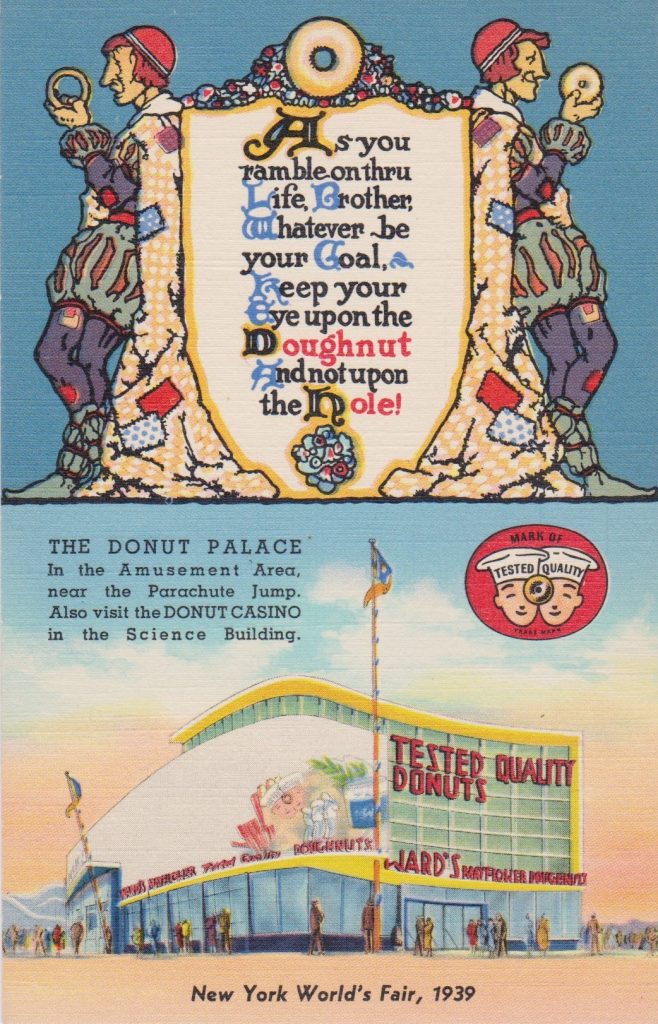
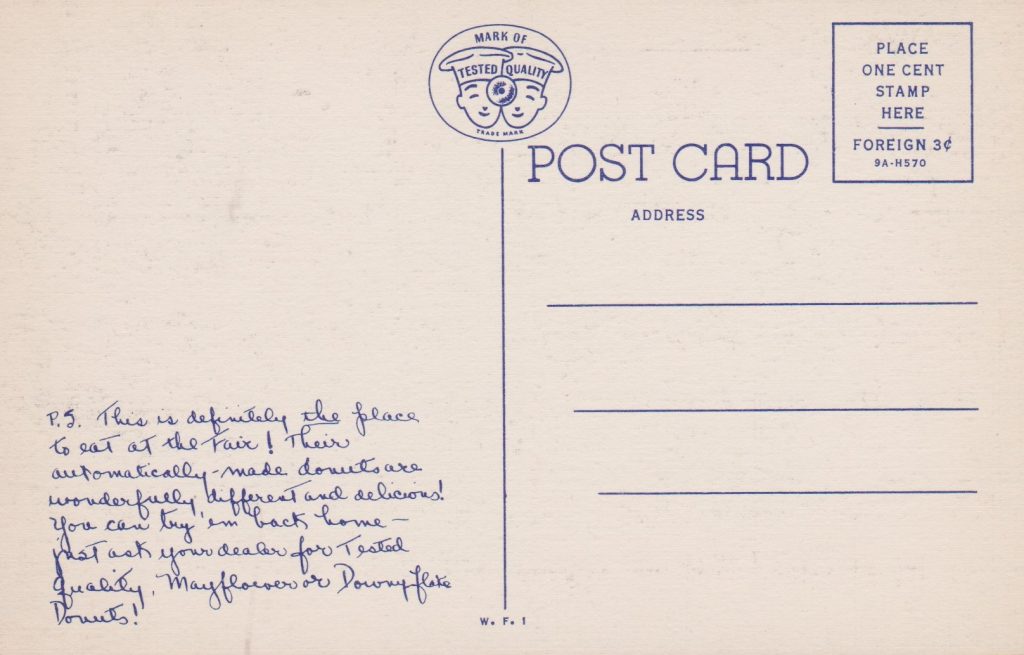
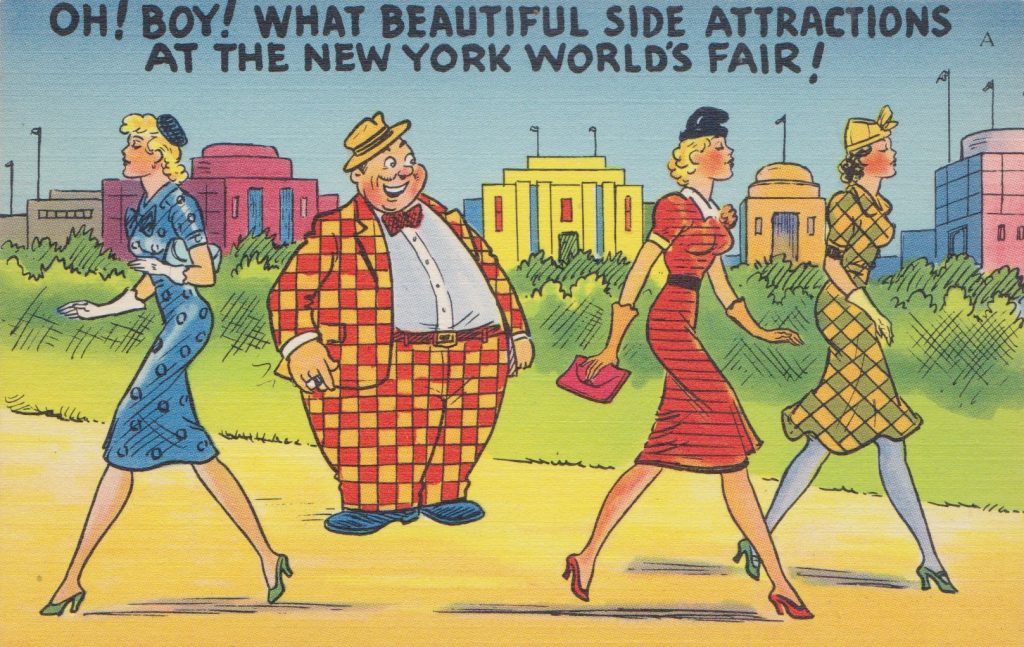
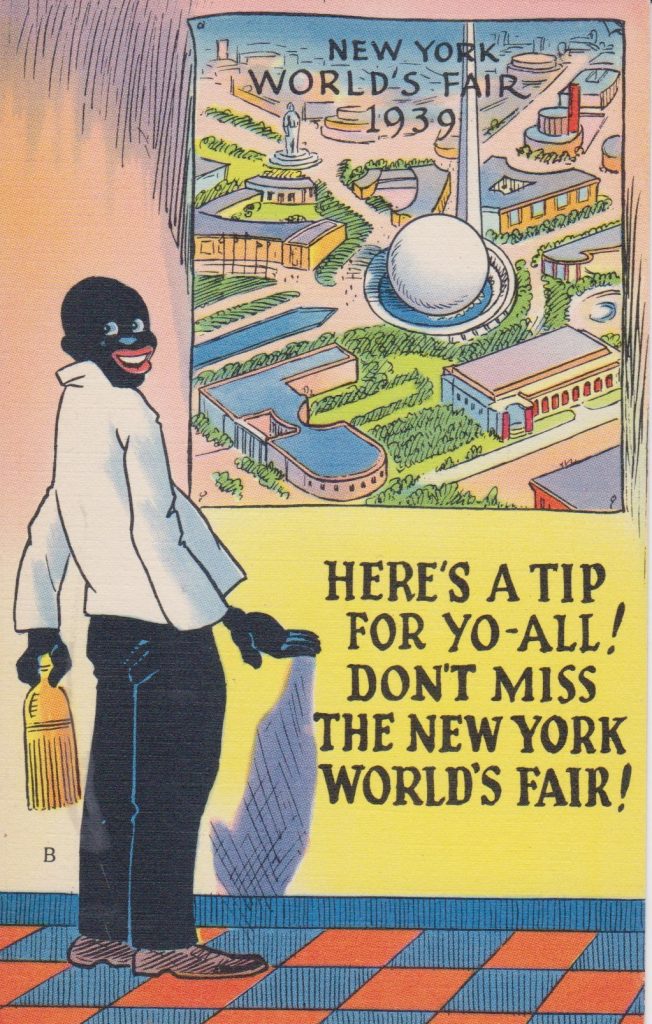
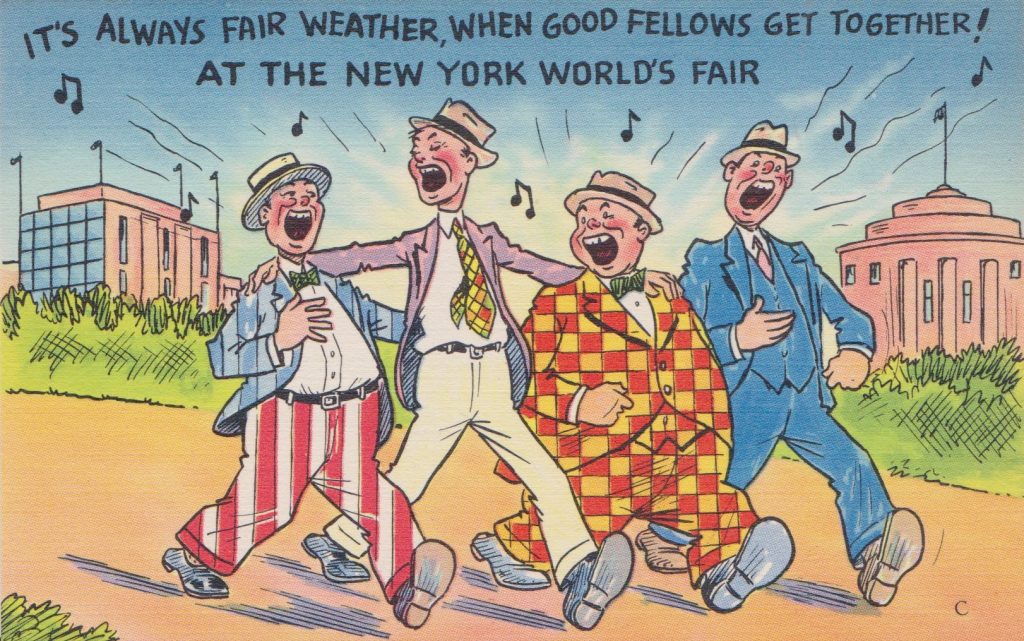
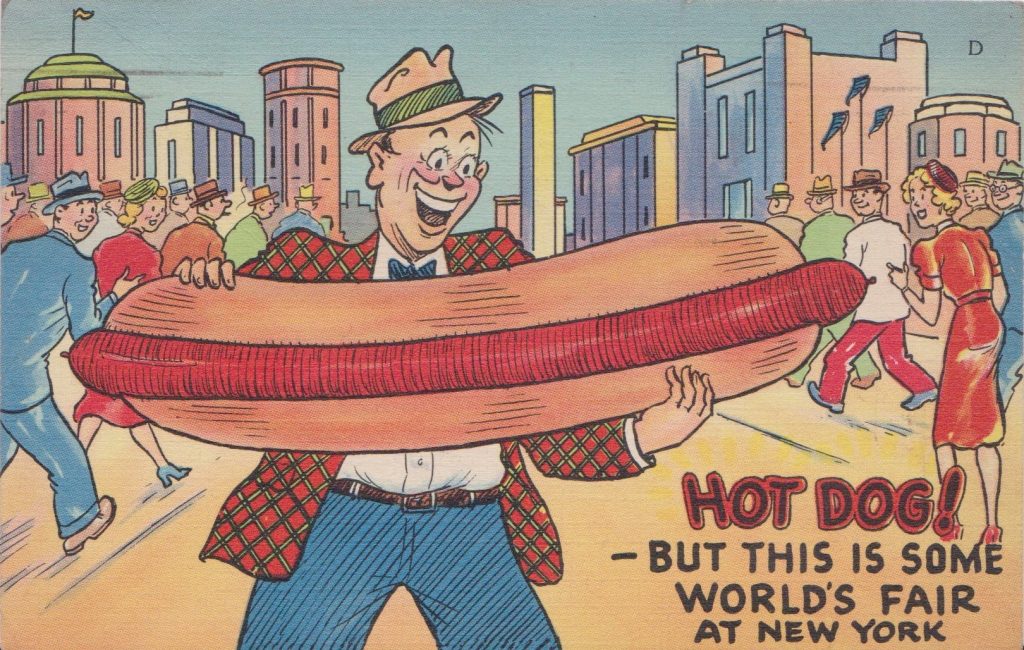
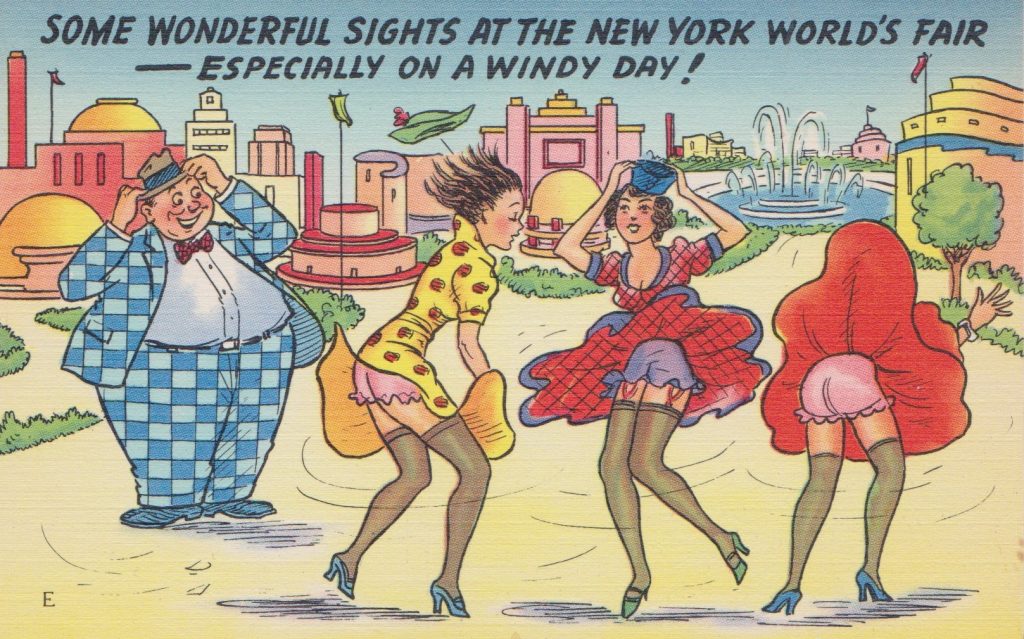
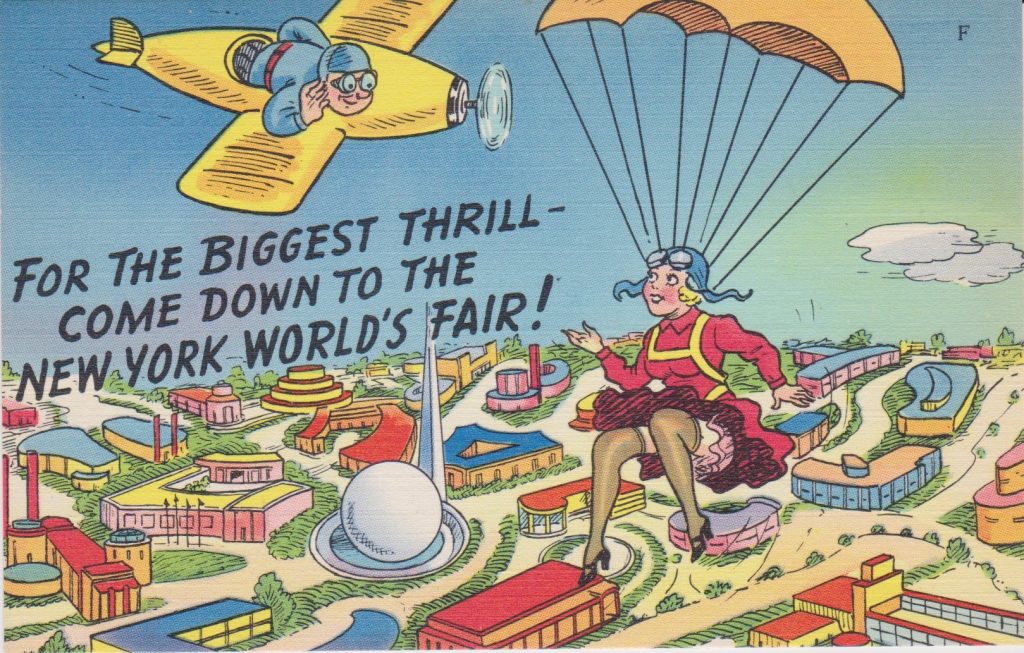
I remember reading the Mayflower Doughnuts version of the Optimist’s Creed s while eating at the company’s Cleveland coffee shop during the 1960’s.
As a old Cal Poly dairy science student I fondly remember Elsie the Borden cow and the many ways the company used her in their ad campaign. Great article, Kyle!
A well researched and well illustrated article. I will now be on the lookout for humorous cards from the 1939 – 1940 New York World’s Fair.
Great article about this fair. Makes me want to go through my box of comic cards and see what might be there that belongs with my other far cards. Thanks for the great examples shown here.
This is an interesting review of cards from this wonderful World’s Fair. I appreciate having this all together. Thanks, Kyle.